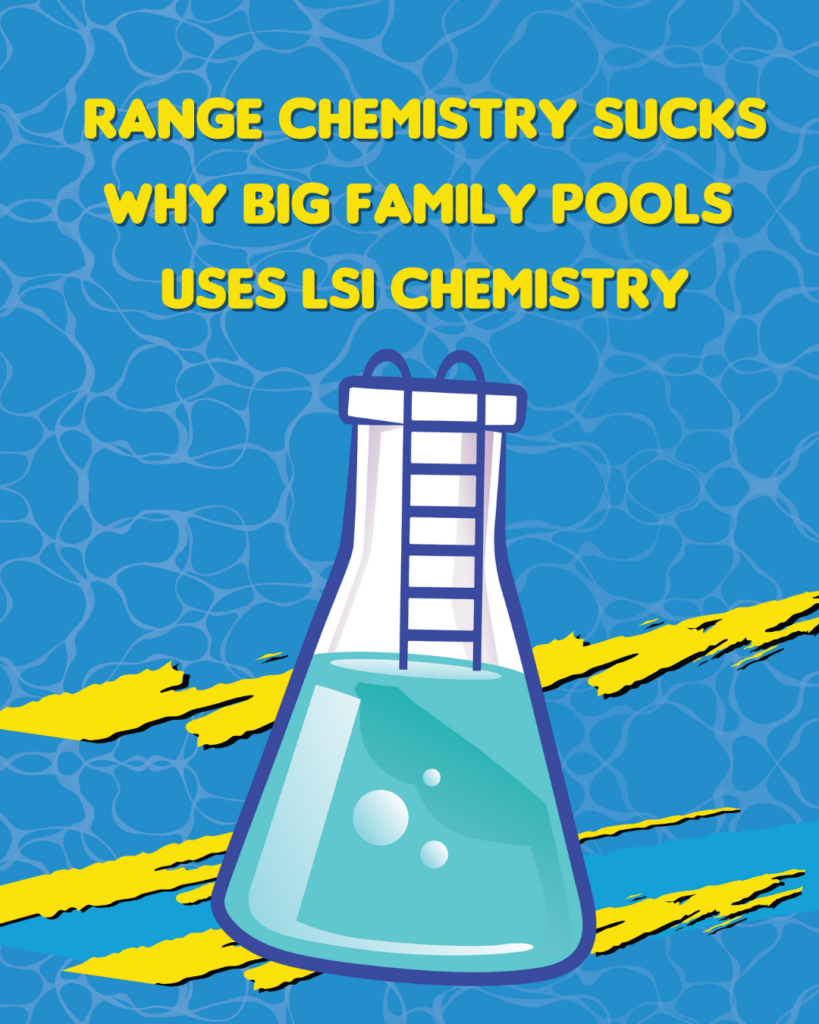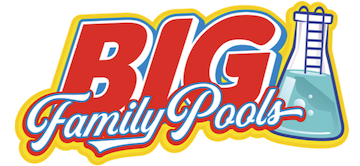
Why Splash ‘n Dash Services Don’t Use LSI
Pool chemistry can seem complicated, but using the right approach makes all the difference between a problematic pool and one that’s consistently balanced, clean, and safe. Traditional range chemistry has been the standard for decades, but there’s a better way: the Langelier Saturation Index (LSI). Let’s explore why LSI should be your go-to method for every pool, every week. Splash ‘n dash pool services does not invest in expensive testing equipment and won’t take the time to do it right.
The Problem with Traditional Range Chemistry
Traditional range chemistry focuses on keeping individual chemical parameters within acceptable ranges:
- pH: 7.2-7.8
- Total Alkalinity: 80-120 ppm
- Calcium Hardness: 200-400 ppm
- Cyanuric Acid: 30-50 ppm
While this approach seems logical, it has significant flaws:
1. Isolated Parameters Don’t Tell the Whole Story
Range chemistry treats each parameter independently, ignoring how they interact. Your pH might be “in range” at 7.6 and your calcium hardness “in range” at 350 ppm, but these combinations could still create water that’s either scaling or corrosive depending on other factors.
2. Too Much Wiggle Room
The wide acceptable ranges mean your water could be at the extreme ends of multiple parameters simultaneously, creating an imbalance that damages your pool’s surfaces and equipment while the test kit still shows everything is “in-range.”
3. Temperature Isn’t Factored In
Range chemistry typically ignores water temperature, which significantly affects water balance. A pool that’s perfectly balanced could be extremely sailing in summer and then become extremely corrosive in the winter. With the large fluctuations in Paradise Valley water temperatures, this will almost certainly cause long term issues.
Example
Below is a picture to show you examples. Both of these are in “range.” But you will see the one on the left is scale forming, and the one on the right is corrosive. Even though both are “in range.”

4. No Predictive Power
Range chemistry is reactive rather than proactive. You’re always responding to problems after they develop rather than preventing them.
The LSI Advantage: A Holistic Approach to Water Balance
The Langelier Saturation Index takes a fundamentally different approach, calculating a single value that indicates whether your water is balanced, scaling, or corrosive based on the relationship between multiple factors:
- pH
- Temperature
- Calcium hardness
- Total alkalinity
- Total dissolved solids (TDS)
- Cyanuric acid (if present)
- Borates
How LSI Works
LSI provides a single numerical value:
- LSI = 0: Water is perfectly balanced
- LSI > 0: Water is scaling (can deposit calcium)
- LSI < 0: Water is corrosive (can damage surfaces and equipment)
The ideal range is -0.3 to +0.3.
Benefits of Weekly LSI Testing
1. Comprehensive Understanding
LSI gives you the complete picture of your water balance by accounting for all relevant chemical parameters and their interactions, not just individual readings.
2. Prevents Damage
By maintaining water within the proper LSI range, you prevent:
- Etching of plaster and grout
- Corrosion of metal parts and equipment
- Excess scale formation on surfaces
- Cloudy water
- Reduced sanitizer effectiveness
3. Temperature Adjustment
LSI incorporates water temperature, allowing you to adjust chemistry seasonally for consistent balance year-round.
4. Predictive Power
LSI calculations help you predict and prevent problems before they occur. You can run “what-if” scenarios to determine the best approach for adjusting your chemistry.
5. Economic Benefits
Properly balanced water extends the life of your pool surfaces, equipment, and plumbing, saving thousands in potential repair costs. It also optimizes chemical usage, reducing waste and unnecessary spending.
Implementing LSI in Your Weekly Maintenance
Transitioning to LSI-based pool maintenance is straightforward:
- Test all parameters monthly: pH, total alkalinity, calcium hardness, cyanuric acid, TDS borates, and temperature. And update weekly with pH and alkalinity.
- Calculate your LSI using an LSI calculator which BIG Family Pools has in their software.
- Adjust chemicals based on the LSI value, prioritizing the most effective adjustments to bring your LSI into the ideal range.
- Document changes to track patterns and seasonal variations.
Case Study: The Difference LSI Makes
We recently converted a commercial pool from range chemistry to weekly LSI monitoring. The pool had a history of recurring scale issues despite “in-range” chemistry readings. By implementing LSI-based maintenance:
- Scale formation ceased completely
- Chemical usage decreased by 23%
- Equipment maintenance needs reduced
- Water clarity improved substantially
- The facility saved approximately $3,200 in annual maintenance costs
Conclusion: LSI for Every Pool, Every Week
While range chemistry might seem simpler, LSI provides a more scientific, comprehensive approach to water balance that prevents problems rather than simply reacting to them. By implementing weekly LSI testing and adjustments, you’ll enjoy:
- Clearer, more comfortable water
- Extended equipment life
- Reduced chemical usage
- Fewer unexpected problems
- Lower long-term maintenance costs
The bottom line is clear: LSI-based chemistry is the professional standard for a reason. Make the switch today, and you’ll never look back at the old range chemistry approach again.
Have questions about implementing LSI in your pool maintenance routine? Contact us today.
